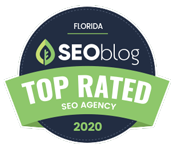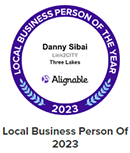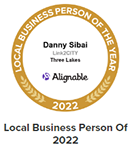
Case Study: Growing a Local Law Firm with Digital Marketing
In the case study of local law firm growth with digital marketing, one would be guided entirely about the law firm digital marketing. One would want to have knowledge on tips, meaning, and strategies to follow for superior outcomes as outlined in the book.
Welcome to our in-depth guide on law firm digital marketing. Whether you’re part of our Client Case Studies series or just curious about how modern marketing techniques can transform a legal practice, this case study will walk you through actionable insights and measurable results. You’ll understand how smart digital investments can play a crucial role in your law firm’s growth and client acquisition strategy.
What is Law Firm Digital Marketing?
Law firm digital marketing is a useful and strategic use of various digital channels to promote legal services to increase client retention and grow brand awareness. There are several tactics that can be customized for use by law firms and such includes:
- Search Engine Optimization (SEO) tailored for local search
- Google Ads and pay-per-click (PPC) campaigns for attorneys
- Website design optimized for lead conversion
- Content marketing with legal blogs and informative guides
- Online reviews and reputation management
- Social media outreach, especially LinkedIn and Facebook
Mobile-first indexing is just one of the numerous signals that Google uses to ascertain the relevancy of a website in response to a query-made even more important now since mobile search has finally overtaken that of the desktop variety. Keeping the digital future of the firm in perspective alongside these sorts of oncoming changes is obviously very wise. With global events aiding in the process of adapting to new client behaviors, only a bit short of what is expected in the year 2025 there is established a change in the expectations and thus the behavior expected from businesses.
Why Law Firm Digital Marketing Matters for Client Case Studies
But it's not digital marketing that typically comes to mind as being applied within the vast law firms. Small and mid-sized law firms can leverage more so that the audience they serve realizes the benefits. This case study pertains to a family law practice within the Midwest-previously one that never took off despite those rosters of billboards, print ads, and local sponsorships.
That happened around early 2024 when their online presence could barely be rendered visible. Neither has the website updated in the past couple of years nor had it ever been optimized for SEO. This doesn't guarantee them enough conversions. They fully gained from digitalization regarding the improvement they recognized as months proceeded with wholly implemented local SEO optimization, Google Ads management, and a well-designed strategic content calendar.
A Look at the Challenges
There were problems to tackle regarding the transformation of their business that used to be encountered at law firms:
- Not immediately recognizable: their name appeared in position 5 or even lower in Google search results, blasting it into almost invisible standing in the eyes of potential clients.
- Website Design not Good: seriously lacking mobile capability, without any CTAs, and had not been refreshed in over three years' time.
- Percentage of Mastering Skills: Zero CRMs or a/analytics as yet on the current leads between sources.
- Depending on the Referral System: Former clients and personal networks were the epitome of low growth. The growth it could make was probably referrals.
Our Strategy for Legal Marketing Success
We've had them rolling with a 3-phase implementation of digital marketing strategy, which has been quite effective in accelerating the preformation of the business.
Phase 1: Redesigning & Building Website for SEO
A completely re-designed page on a responsive development, it comes in view with clear CTAs and schema code, and thus-optimized service pages meanwhile. Right on the very first day annulled it with SEO best practices like H1 tag, inner linking, and the advancement of page speed.
Phase 2: Locality SEO & Google Business Profile Optimization
With their main market that one metro area usually has, placing themselves well for any type of terms like "family lawyer in [city]" for the keywords and suitable optimization of Google Business Profile, drove many more important appointments via the link building for legal directories such as Avvo, Justia, and FindLaw.
Phase 3: Paid Ads & Content Marketing
We were creating content that touched on education in matters of divorce law or child custody proceedings and giving up legal tips while advertising specific Google Ads in the area. This, of course, dovetailed into acquisition of traffic from both paid and organic channels, strengthening the company's online presence.
Measuring Results: Legal Marketing Success by the Numbers
These were the turning points in just a span of six months:
- Larger website visitations, majority of which caused by searches and paid ads, up by 800%
- Bitter query calls achieved as the top 3 spots on Google for top intent keywords- "family lawyer in [city]" and "divorce attorney near me"
- Utterly high bounce figure: qualified leads from contact forms and phone calls went up 60% from month to month
- Returns caused by feeds within three months of operations came to 5:1 for media investment
Moreover, reviews on both Google and Avvo from clients increased due to automated follow-ups, as reputation and trustworthiness of the firm improved enormously. The lead went into CRM for transparency and follow-up opportunities given to attorneys.
Understanding How Law Firm Digital Marketing Influences Paid Ads Strategy
A misconception is agitating SEO and PPC as rival strategies. In reality, they complement each other—especially in legal services, where competition is fierce. For this particular client, to fully leverage the synergy of both was an important key to success in legal marketing.
We used the data to find out which blog topics brought in the most organic traffic. The highest traffic-generating themes were turned into paid ad campaigns. For instance, after having a blog about "What to Do After Receiving Divorce Papers in [state]", which did not cost a cent, we experienced that it was republished and made the ad to have a landing page and Google Ads that target related search terms. The conversion rate was a big hit for such blog ads, a performance 18% above the industry norm.
Understanding what this means in the paid context of how law firm digital marketing affects performance in your paid ads can make the difference. Let's see practical real-world examples now.
Success Story: Jackson & Hartman, LLP
Jackson & Hartman was a mid-sized litigation firm from Chicago, which was failing to acquire clients once the traditional ways failed just a didn't work. They took a look into law firm digital marketing to re-grow their ways. They had a new SEO-friendly website up and running and started blogging regularly about cases they handled, which helped toward keeping the law-qualified leads flowing in. After only three months, the company noticed that there was an obvious increase in quality traffic. In less than a year, monthly lead generation nearly reached 240% and lead percentage 35%. In addition to that, partner-authored thought leadership columns generated credibility and reference citations on legal forums.
In particular, marketing automation systems helped the firm manage follow-ups and seamlessly nurture leads, turning interested prospects into retained clients, and opened up digital marketing for scalable, sustainable models for consistent growth-which traditional methods have not brought about since 2015.
Client Case Study: Miller Family Law
An uber-competitive Denver playing field was the scope on which Miller Family Law was working. They focused on getting their client-centrically designed web work done with help from an awesome consultant. So, they rethought their site in terms of landing pages matched to family law but also made-over and set for local intent, such as with the local-keyword terms "divorce lawyer Denver" and "child custody attorney Colorado." My client jumped his revenues to the top-3 rank in organic search listings for several high-volume queries with home-page sliders.
But that's not all. They put integrated social proof into place, like these customer testimonials neatly planted around the landing pages and drives landing pages as well as recent case successes (with client permission), all of which drove credibility between the build and action. As a result, website session duration increased by 60%, and contact form inquiries doubled in just the first four months. Coupled with their measurable performance up-dates, the firm adapted quickly for the changing algorithms, producing quite an effective law-marketing success model built to last on dynamics.
Leveraging PPC and Retargeting: The Case of Olsen & Wright
Not every firm depends on SEO or content market to engage in digital advertising. Some firms like Olsen & Wright, a personal injury firm located in San Diego, predominantly rely on paid media. So their law firm digital marketing worked under the guidance of having Google Ads as one arm, representing high-intent searches such as "car accident lawyer near me," and the other arm as Facebook retargeting to engage people who have not yet taken that conversion.
This was also the strategy why the customer acquisitions got drop lower in cost from their billboards, due to a 7x return on their ad banks. On top of this, they used call tracking to attribute ROI to specific campaigns to help substantiate, focus on the ads producing more profitable cases. The ultimate outcome was an increase in their case volume by 180%, with digital marketing slotted into being the chief growth driver.
Building Authority Through Legal Content: Stonebridge Immigration Law
It was from the start with Stonebridge Immigration Law that selling online using traditional methods was never going to give them success. They would soon find out how well their online legal marketing strategies adapted from the best techniques discovered among law firms in digital marketing in a dual-language targeted legal guide publication and naturally driving client inquiries-answer videos.
Instead, stuff your schema markup into each blog post and video so that they surface and get on a snippets list in Google-every query around immigration, in this envelope: With that content, the company became an authority on the topics in its various citations-they actually got links from well-recognized institutions and even press. In one year, its traffic has increased five hundred percent, while its client consultations merely took off as a result.
Lessons Learned Across Client Case Studies
- They Did It Right the Personalized Way: With law firm internet marketing, one-size-fits-all approaches fail. Each firm's niche, geography, and needs of its people should steer the strategy.
- They Will Stay Sailing: Companies that have seen continued success gave maximum weight to test by experimentation and continual fine-tuning on relevant keywords, messaging, ad campaigns, and even CTAs with present analytics.
- The Brand Trust Base: The enclosed real client reviews, awards, shared ethically for successful customer wins from cases, and personally connecting stories are an instant hit.
- Even Base Tools Produce Results: A lead scoring tool, automated email workflow or web heatmap-all tools similar to this contributed "significantly" to the cause of success.
Final Thoughts: Scaling with Confidence
Every case study signifies that going digital with law firm marketing is not a wave but a proven swing toward making economic sense out of legal marketing. In fact, from solo attorneys to multi-office firms, those deploying digital representatives continue getting more robust leads, better reputations, and establish predictable revenue streams. It doesn't just bring better visibility but a competitive edge amongst the many others around who are not riding on data-driven digital marketing.
SEO, pay-per-click campaigns, or creating contents for the consumer—whatever is your roadmap toward success, you will take this direction in view of that: anchor more on the consumer, refine your message continuously, and leave most of it to the digital tools. This is because the potential for long-term growth strongly depends on an adaptive, transparent user experience-set marketing strategy.
Optimizing Your Digital Presence for Legal Marketing Success
In order to stand against the medium-large to larger size firms, small firms must grab a piece of this difference. It puts the importance of a strategic, comprehensive law firm digital marketing strategy into the light. You know by now the power of SEO, PPC, local search optimization, and content marketing. But making a circle around a successful law marketing means turning data into action and constant changes to your digital outreach activities.
Visibility is really not credible without being backed by innovation in this digital world. Your firm's website needs to be able to convert visitors into users by delivering valuable content that addresses some of the key client concerns. The lack of visibility—if not an unpleasant digital experience—will probably cause the potential client not to engage. Comprehensive digital strategies have to put together technical website health, UX, and strategic targeting.
Tracking Metrics that Matter
It will be wise to then review metrics that directly or indirectly correlate toward leads and conversions. A few examples include:
- Organic traffic: Are more searchers finding you through their unpaid searches?
- Bounce rate: Do they stay long on your website or leave soon?
- Conversion rate: How many website visitors are turning into lead or consultative opportunities?
- Keyword rankings: Are your top services ranking on search engines for those high-intent keywords?
Tools like Google Analytics 4, Google Search Console, and call-tracking software are useful for merging visitors' online to actual lead procurement actions. Ideally combined with CRM systems, it is possible to determine which digital input produces real results in the case of business.
Adapt to Consumer Behavior Trends
Modern-day law firm Internet marketing really will not work with merely a few sources of traffic. Your possible consumers are looking for their information on Google, YouTube, review sites, legal directories, et cetera. Therefore, a working strategy will take the current behavior of the modern user into account:
- Mobile-focused content: Prospective clients are most likely searching on their smartphones.
- Video marketing: Videos on platforms like YouTube can actually humanize your practice and add a more solid level of trust.
- Optimized voice search: There is a perceptible uptick in the number of potential clients now using smart assistants for searching legal help.
In the light of these behavior check points, one's law firm remains present, useful even practical, in the decision option development process.
Staying Competitive with Paid Advertising
Though SEO is a more substantial source of making a law firm available on searches, as it promises long-term gains compared to PPC campaigns (like Google Ads and Local Services Ads), PPC also ensures instant visibility. When people use terms such as, "personal injury lawyer near me" or "family law attorney Miami," what they mean is to hire. Bidding for opportunities that ensure not just millions of eyes but high conversions would automatically lead your firm to the forefront of their search experience.
Test different headlines, landing pages, and different ads for your ongoing improvements. Use tools like Google Ads Conversion Tracking and call analytics and optimize return for each of the ad spend (ROAS).
Future-Proof Your Law Firm
It's now more predictive and personal. Use tools of AI-an application, such as automated client intake forms and individualized email flows, to lend itself significantly towards client engagement. They redefined the interaction of attorneys with leads with the evolving chats, re-targeting, and high segmentation already being applied by top firms.
Your online reputation, moreover, through Google Reviews and Avvo profiles, constitutes one brick of your digital SEO footprint. Ask satisfied clients to share details on their success and respond quickly to their concerns, feedback, and social media comments.
Frequently Asked Questions
What is law firm digital marketing in simple terms?
Law firm digital marketing is a strategy or concept used to improve legal marketing success by focusing on structured, intentional methods.
How does law firm digital marketing help?
It helps improve performance by aligning your content with search behavior and industry best practices.
Can I apply law firm digital marketing myself?
Absolutely. With the right tools and structure, even beginners can begin applying these principles effectively.
What tools should I use?
Start with Google Search Console, SEMrush, and keyword research tools. These provide visibility into how law firm digital marketing impacts performance.
Next Steps
Request Your Free Digital Marketing Consultation Today!
Take Action Today
If you're serious about accelerating your legal marketing success, there's no better time to start implementing effective law firm digital marketing strategies. Whether you're a solo practitioner or managing a large legal group, digital transformation is non-negotiable for long-term growth.
- Explore Our Lawyer SEO Services
- Learn More About Link2City
- Top Marketing Trends for 2024 — Forbes
- Best Digital Strategies for Business Growth — SEJ
Ready to put your firm on the digital map?





























